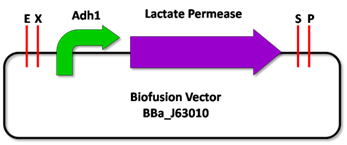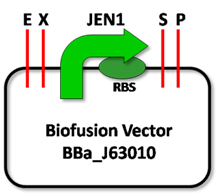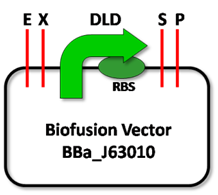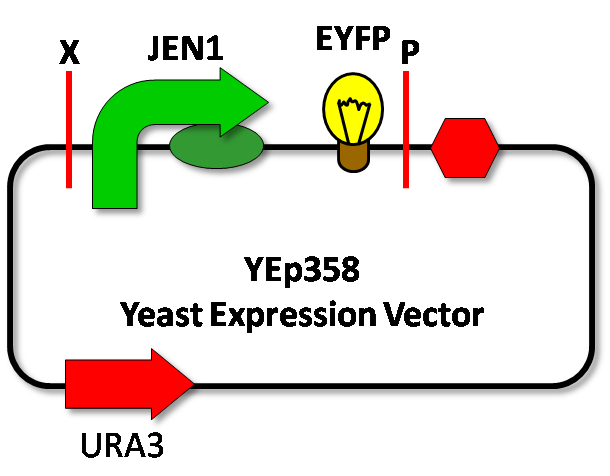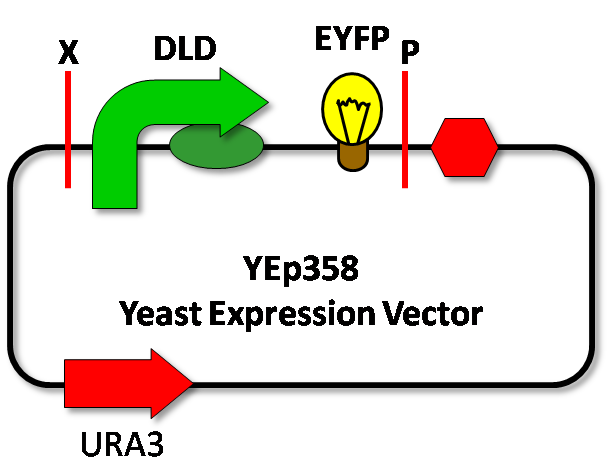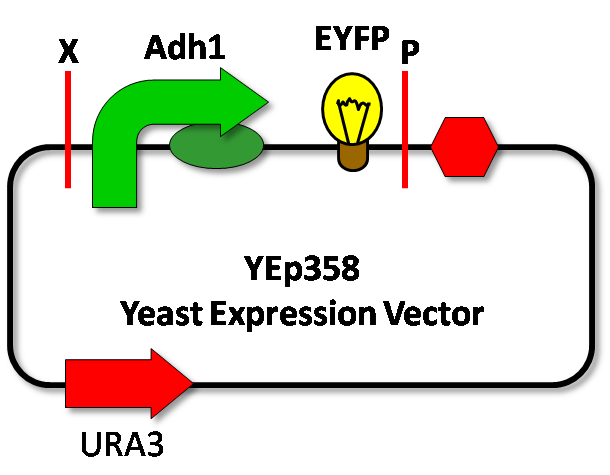Team:UNICAMP-Brazil/Yeastguard/Recognition
From 2009.igem.org
(→Caracterization of the Biobricks) |
(→Caracterization of the Biobricks) |
||
| (21 intermediate revisions not shown) | |||
| Line 2: | Line 2: | ||
__NOTOC__ | __NOTOC__ | ||
=The Yeastguard: Recognition= | =The Yeastguard: Recognition= | ||
| - | <p style=”text-align:justify;”>The mechanism of recognition was based on the uptake of lactic acid produced by lactobacilli contaminants of the producing media. The mechanism consists of two devices | + | <p style=”text-align:justify;”>The mechanism of recognition was based on the uptake of lactic acid produced by lactobacilli contaminants of the producing media. The mechanism consists of two devices; one of them is responsible for the increased sensitivity of the yeasts to lactate and the other detects its presence in the interior of the cell and integrates the recognition engine to the killing mechanism.</p> |
==Increased sensitivity to lactate== | ==Increased sensitivity to lactate== | ||
| - | <p style=”text-align:justify;”>The uptake of lactate is made by a permease of monocarboxylate acids encoded by the gene ''JEN1'', which is repressed by glucose (1). Thus, only after the total consumption of glucose available in the media, the yeasts could be able to recognize the contamination. Therefore, to give yeasts the ability to detect contamination in early stages, a device containing the gene ''JEN1'' was designed, being regulated by a constitutive promoter ''ADH1''(BBa_J63005)(Figure 1). The idea is to make the yeasts more sensitive to the presence of lactate, considering that it will be expressing, constitutively, the lactate permease gene. ''JEN1'' | + | <p style=”text-align:justify;”>The uptake of lactate is made by a permease of monocarboxylate acids encoded by the gene ''JEN1'', which is repressed by glucose (1). Thus, only after the total consumption of glucose available in the media, the yeasts could be able to recognize the contamination. Therefore, to give yeasts the ability to detect contamination in early stages, a device containing the gene ''JEN1'' was designed, being regulated by a constitutive promoter ''ADH1''(BBa_J63005)(Figure 1). The idea is to make the yeasts more sensitive to the presence of lactate, considering that it will be expressing, constitutively, the lactate permease gene. ''JEN1'' was isolated by PCR from the genomic DNA of the yeast ''Kluyveromyces lactis var. lactis'', which is functional in ''Saccharomyces cerevisiae'' (3).</p> |
| - | [[Image:Yeast_Model_1.png |center]] | + | [[Image:Yeast_Model_1.png| center]] |
<p style="text-align:justify;font-size:0.9em;">Figure 1: Lactate Permease constitutive expression.</p> | <p style="text-align:justify;font-size:0.9em;">Figure 1: Lactate Permease constitutive expression.</p> | ||
| Line 13: | Line 13: | ||
==Recognition of lactate== | ==Recognition of lactate== | ||
| - | <p style=”text-align:justify;”>The ideal device to | + | <p style=”text-align:justify;”>The ideal device to sense the presence of lactate in the yeasts´ cytoplasm and activate the killing mechanism must respond to lactate and must not be repressed by glucose. Thus, two promoters were chosen as candidates (2,3): ''DLD'' (modified) and ''JEN1''; both found in the genome of the yeast ''Kluyveromyces lactis var. lactis''. These promoters were amplified by PCR from the genome of ''K. lactis'' and will include the sites upstream the ATG. The amplicons have approximately 1000bp (''JEN1'') and 471bp (''DLD'').</p> |
<html><center></html> | <html><center></html> | ||
| Line 19: | Line 19: | ||
<html></center></html> | <html></center></html> | ||
<p style="text-align:justify;font-size:0.9em;">Figure 2: JEN1 and DLD promoters from ''Kluyveromyces lactis''.</p> | <p style="text-align:justify;font-size:0.9em;">Figure 2: JEN1 and DLD promoters from ''Kluyveromyces lactis''.</p> | ||
| - | |||
==Caracterization of the Biobricks== | ==Caracterization of the Biobricks== | ||
| - | <p style=”text-align:justify;”>The biobricks described above are going to be | + | <p style=”text-align:justify;”>The biobricks described above are going to be assembled according to the [https://2009.igem.org/Team:UNICAMP-Brazil/Protocols/pGEMStrategy pGEM cloning strategy] proposed by the team. And in order to caracterize the biobricks, its functionality must be seen in yeasts. Thus, the parts described above are going to be transferred to an [https://2009.igem.org/Team:UNICAMP-Brazil/Protocols/YEP yeast expression vector] (YEp358 ura+) and then be transformed into the ''Saccharomyces cerevisiae'' YF23 ura- strain.</p> |
| + | |||
| + | *'''JEN1 and DLD promoters caracterization''' | ||
| + | <p style=”text-align:justify;”>Each promoter will be linked to the gene reporter EYFP (BBa_E2030) downstream. Fluorescence analyses will be made by cytometry and the reporter regulated by a constitutive promoter (''ADH1'') will be the comparison parameter (Figure 3).</p> | ||
| + | [[Image:Yeast_Model_4_5.png | 200px]][[Image:Yeast_Model_4_6.png | 200px]][[Image:Yeast_Model_4_4.png | 200px]] | ||
| + | <p style="text-align:justify;font-size:0.9em;">Figure 3: ''JEN1'', ''DLD'' and ''ADH1'' promoters from ''Kluyveromyces lactis'' linked to EYFP reporter.</p> | ||
===References=== | ===References=== | ||
---- | ---- | ||
| - | #<p style=”text-align:justify;”>Casal M, Paiva S, Andrade RP, Gancedo C and Leao C | + | #<p style=”text-align:justify;”>Casal M, Paiva S, Andrade RP, Gancedo C and Leao C. J Bacteriol. 1999, 181, 2620-2623.</p> |
| - | #<p style=”text-align:justify;”>Lodi T, Goffrini P, Bolondi I and Ferrero I. | + | #<p style=”text-align:justify;”>Lodi T, Goffrini P, Bolondi I and Ferrero I. Curr Genet. 1998, 34, 12-20.</p> |
| - | #<p style=”text-align:justify;”>Queiros O, Pereira L, Paiva S, Moradas-Ferreira P and Casal M | + | #<p style=”text-align:justify;”>Queiros O, Pereira L, Paiva S, Moradas-Ferreira P and Casal M. Curr Genet. 2007, 51, 161-169.</p> |
{{:Team:UNICAMP-Brazil/inc_rodape}} | {{:Team:UNICAMP-Brazil/inc_rodape}} | ||
Latest revision as of 00:56, 22 October 2009
| ||||||||||||||||||||||||||||||||||
 "
"









